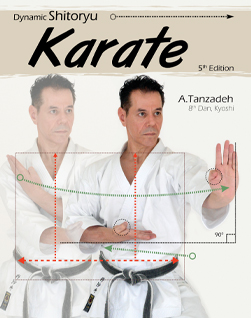Keiko, Renshu, Shuren and Tanren
Keiko 稽古
Keiko is an everyday, straightforward word, usually translated into English as: practice; practising; training; study.
稽 means think, consider, and 古 means old. According to the kanji dictionary, 古 is a little picture of a skull wearing a diadem. It therefore has connotations of revering your ancestors.
Keiko has a simple meaning: to practise (renshū) in order to learn or acquire knowledge.
Renshū 練習
This is another everyday word, usually translated into English as practice; practising.
The first kanji in this word is 練. The right hand side of 練 combines parts meaning bundle and divide. This gives a meaning of classifying or sorting things, and only keeping the good ones.
The left hand side糸 means thread. The dictionary explains that this has connotations of immersing a raw, silken thread into water, which gives a meaning of polishing and refining good things.
As a whole therefore, 練 means polish, forge, temper, drill, train, discipline.
The second kanji in renshuū is 習. This character習 combines羽 (wings) with an abbreviated form of自(self). It therefore symbolises movement; wings repeatedly moving.
Taken together, this word renshū has a sense of repeating something over and over again, to learn it. The dictionary also explains that this word normally applies to something like an academic or technical discipline.
Shūren 習練, 修練 or修錬
There are several ways to write this word.
The first is 習練. Full marks if you noticed that this is simply renshū written backwards. This version of shūren translates as: to repeatedly practise (renshū). To practise (keiko). As you can see, this form of shūren has a close relationship with the first two words.
The next form of shūren is 修練. As you can see, the second kanji is the same, but the first one is different: 修.
This version of shūren修練 is translated as: to refine / improve / forge / train / discipline the spirit (kokoro) or body well.
The third form of shūren is 修錬. But 錬 is really just an alternative version of 練 The left hand side replaces thread 糸with gold 金 and the whole kanji has the meaning of either forging / tempering metal; or of forging / tempering the mind/spirit (kokoro) or body.
Tanren 鍛練 or 鍛錬
Like shūren, tanren can be written with either練 or 錬.
The first kanji, tan 鍛combines two parts:
The right-hand side, 段 is a character you might well recognise as a martial artist. It can be read as tan or dan, and means step; stair; grade; rank; level. (As in shodan, nidan and so on).
The left-hand side 金 means gold, as noted above.
So tan鍛 has a meaning of
- smoothly (step by step) forging metal by beating it; or
- strengthening the mind/spirit (kokoro) or body.
And the whole word tanren means, to forge your mind, spirit, body, or waza (technique, art, skill) in the same way that you would forge metal, and in this way to become praiseworthy.





